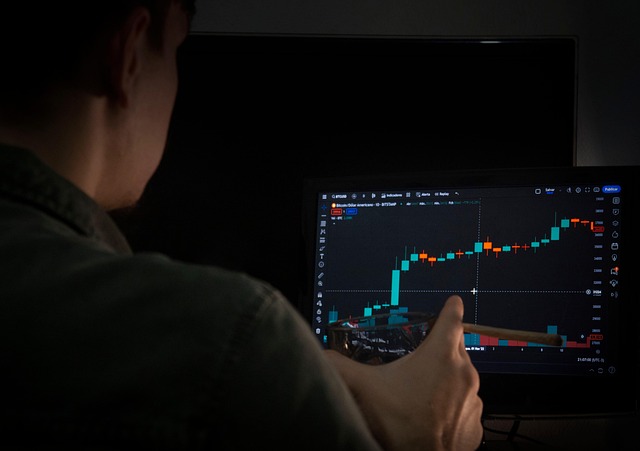Is Bitcoin Crypto a Good Investment? An In-Depth Analysis
Author: Jameson Richman Expert
Published On: 2025-09-02
Prepared by Jameson Richman and our team of experts with over a decade of experience in cryptocurrency and digital asset analysis. Learn more about us.
Investing in Bitcoin and other cryptocurrencies has transitioned from a niche, speculative experiment into a recognized asset class that captivates a broad spectrum of investors—from retail enthusiasts to institutional giants. This rapid evolution is fueled by groundbreaking technological innovations, increasing mainstream acceptance, and the impressive profit potential that crypto markets have demonstrated over the past decade. However, alongside significant upside potential, the space is riddled with volatility, regulatory uncertainties, and technological challenges that necessitate a comprehensive understanding before committing your hard-earned capital. Drawing on years of market experience, rigorous analysis, and a deep insight into technological trends, this article offers an extensive exploration of Bitcoin’s fundamentals, market dynamics, emerging trends, risks, and strategic considerations. This will enable you to evaluate whether Bitcoin aligns with your financial goals, risk appetite, and long-term investment strategy.

Understanding Bitcoin: The Foundations of Digital Gold
Bitcoin was conceptualized in 2008 and launched in 2009 by the pseudonymous Satoshi Nakamoto, marking a paradigm shift in the conception of money and decentralized finance. As the first cryptocurrency, Bitcoin operates on a decentralized peer-to-peer network, eliminating the need for intermediaries such as banks or governments. Its underlying technology, blockchain—a transparent, immutable digital ledger—records every transaction in a distributed manner across a global network of nodes, secured through cryptographic principles like elliptic curve cryptography and proof-of-work consensus mechanisms. This architecture ensures robustness, transparency, and resistance to tampering, fostering trust without central authorities.
A pivotal feature of Bitcoin is its fixed supply cap of 21 million coins, embedded directly into its protocol. This scarcity mimics precious metals like gold, which have historically been viewed as stores of value. Unlike fiat currencies, which can be inflated at will via monetary easing policies, Bitcoin’s capped supply creates a deflationary pressure over time. Its issuance is halved approximately every four years via scheduled "halving" events—reducing the number of newly minted coins—thus gradually diminishing inflation and reinforcing its scarcity-driven value proposition. Many proponents refer to Bitcoin as “digital gold” because of its potential to serve as a hedge against inflation, currency devaluation, and macroeconomic instability.
Beyond its monetary properties, Bitcoin acts as a censorship-resistant, borderless medium of exchange, capable of transferring value across the globe without intermediaries or regulatory restrictions (subject to jurisdictional laws). Over the years, Bitcoin has matured from an obscure experiment into a thriving ecosystem supported by miners, exchanges, custodians, developers, and institutional investors. This ecosystem enhances its resilience but also introduces challenges such as network scalability limitations, high energy consumption, and evolving regulatory scrutiny—factors that influence its adoption trajectory and valuation.
My Personal Journey and Market Dynamics
My engagement with Bitcoin started during its early days when prices hovered around $200. The subsequent years revealed its extreme volatility, pioneering technological advancements, and contrasting sentiments from mainstream financial sectors. Witnessing Bitcoin’s meteoric rise to nearly $20,000 in late 2017, followed by a steep correction below $4,000 in 2018, underscored the importance of disciplined investing, emotional resilience, and long-term perspective. Such experiences emphasized that patience, strategic discipline, and continuous education are essential to navigating this nascent market’s tumultuous waters.
Through ongoing analysis, I’ve identified key drivers of Bitcoin’s price movements:
- Supply Scarcity and Halving Cycles: The scheduled halving events—reducing new supply—create supply-side shocks that often precede bullish market phases, assuming demand persists or rises.
- Institutional Adoption: The participation of publicly traded companies, hedge funds, and asset managers signals legitimacy, reduces volatility, and enhances liquidity, encouraging further institutional entry.
- Regulatory Environment: Policy developments, whether favorable regulations or outright bans, significantly influence market sentiment, liquidity, and broader adoption.
- Macro-Economic Trends: Economic crises, inflationary pressures, and geopolitical tensions often drive investors toward Bitcoin as a safe haven asset, reinforcing its “digital gold” narrative.
- Technological Progress: Upgrades such as Taproot (improving privacy and smart contract capabilities), the Lightning Network (enabling scalable, microtransactions), and Layer 2 solutions are critical to Bitcoin’s future usability, scalability, and integration into everyday financial services.
Risks and Challenges in Bitcoin Investment
Despite its compelling narrative and technological promise, investing in Bitcoin entails substantial risks that demand careful scrutiny and risk management strategies:
- High Volatility: Bitcoin’s price can swing dramatically—often 10-20% within 24 hours—driven by speculative trading, macroeconomic news, regulatory announcements, or large market moves. This volatility can be unsettling and may not suit risk-averse investors.
- Regulatory Risks: Globally, governments are still shaping comprehensive legal frameworks. Potential bans, increased taxation, or stringent compliance requirements could restrict access, influence liquidity, and impact prices negatively.
- Technological Vulnerabilities: While the core blockchain remains secure, vulnerabilities can arise through software bugs, 51% attacks (where a malicious actor controls majority hashing power), or exploits within exchange and wallet infrastructures. The emergence of quantum computing poses a long-term threat to cryptographic security, although practical quantum attacks are still theoretical.
- Market Manipulation and Liquidity Risks: Less regulated exchanges are susceptible to manipulation tactics such as pump-and-dump schemes, wash trading, and spoofing. These activities can distort prices, erode investor confidence, and lead to liquidity crunches during critical moments.
- Security and Custody Challenges: Safeguarding private keys, avoiding phishing scams, and managing hardware wallets demand vigilance. A single breach can result in permanent loss of assets, emphasizing the importance of security best practices.
In my experience, disciplined investment strategies—such as setting clear entry and exit points, employing stop-loss orders, and avoiding over-leverage—are vital for navigating these risks. Maintaining emotional discipline during downturns prevents panic-selling and helps capture long-term gains, especially as the ecosystem evolves and matures.

Choosing Reliable Platforms and Securing Your Assets
A critical aspect of successful Bitcoin investing is selecting reputable trading platforms and implementing robust security measures. Leading exchanges like Binance, MEXC, Bitget, and Bybit are recognized for their security protocols, liquidity, and user experience. For example:
- Binance: Offers extensive trading options, including spot, futures, staking, and savings programs, backed by top-tier security measures such as cold storage, insurance funds, and regular audits.
- MEXC: Known for competitive fees, broad global reach, and advanced trading features.
- Bitget: Specializes in derivatives, social trading, and innovative financial products.
- Bybit: Popular for leveraged trading, derivatives, and high-liquidity markets.
Beyond exchange selection, securing your assets through hardware wallets (such as Ledger or Trezor) and activating multi-factor authentication are essential for preventing theft and hacking. Cold storage solutions—particularly hardware wallets—are recommended for long-term holdings, while regular security audits and cautious management of private keys significantly reduce exposure to cyber threats.
Emerging Trends and Future Use Cases
The cryptocurrency landscape is dynamic, with technological developments and expanding use cases that could redefine Bitcoin’s valuation and utility:
- Decentralized Finance (DeFi): While DeFi platforms primarily thrive on Ethereum, Bitcoin is increasingly integrated via wrapped tokens like WBTC, trustless bridges, and collateralized lending platforms. These integrations broaden Bitcoin's utility beyond a store of value, enabling lending, borrowing, and earning interest.
- Asset Tokenization and NFTs: The tokenization of real-world assets—such as real estate, art, or commodities—within blockchain ecosystems, alongside the explosion of Non-Fungible Tokens (NFTs), could enhance Bitcoin’s perception as a foundational, institutional-grade asset.
- Bitcoin as Collateral and Yield-Generation: Platforms like BlockFi, Celsius, and others allow users to earn interest or borrow against Bitcoin holdings, creating additional income streams and liquidity options without liquidating positions.
- Institutional and Corporate Adoption: Major corporations such as MicroStrategy, Tesla, and Square adopting Bitcoin as part of treasury reserves lend legitimacy and stability, potentially reducing volatility and encouraging further mainstream integration.
- Technological Upgrades: Innovations such as Taproot (enhancing privacy and enabling complex smart contracts), the Lightning Network (facilitating fast, low-cost microtransactions), and future Layer 2 solutions are vital to Bitcoin’s scalability and utility in everyday transactions and enterprise use cases.
Is Bitcoin a Good Investment? A Personal and Analytical Perspective
Deciding whether Bitcoin deserves a place in your investment portfolio depends on a thorough understanding of its characteristics, your risk profile, and your long-term objectives. Consider these key points:
- Risk Tolerance: Bitcoin’s extreme volatility necessitates that only a portion of your portfolio—aligned with your risk capacity—is allocated to it. For many, 1-5% exposure strikes a balance between potential gains and manageable risk.
- Investment Horizon: Longer-term holding periods allow investors to weather short-term swings, benefiting from macroeconomic trends like inflationary pressures, currency devaluations, or systemic financial shifts.
- Portfolio Diversification: As a non-correlated asset, Bitcoin can reduce overall portfolio risk during traditional market downturns, acting as a hedge against inflation and fiat currency devaluations.
- Continuous Education and Monitoring: Staying informed about technological upgrades, regulatory changes, and macroeconomic shifts is crucial. Regular rebalancing ensures your holdings reflect evolving market conditions and your personal risk appetite.
It is essential to recognize that Bitcoin is not a guaranteed path to wealth. Its high volatility and regulatory environment demand disciplined, informed investing. Patience, strategic planning, and ongoing education are your best tools to navigate this revolutionary asset class successfully.

Conclusion: Making an Informed Decision
Ultimately, whether Bitcoin is a suitable investment hinges on your individual circumstances—financial goals, risk tolerance, investment horizon, and understanding of the crypto ecosystem. The potential for substantial returns is compelling, but it comes with inherent risks—including extreme price swings, regulatory uncertainties, and technological vulnerabilities—that must be carefully weighed.
The landscape is continuously evolving with technological breakthroughs, regulatory developments, and macroeconomic shifts shaping Bitcoin’s future. Staying well-informed, adopting flexible and disciplined strategies, and employing robust security practices are essential in navigating this dynamic environment.
Approaching Bitcoin with a grounded, research-backed perspective—grounded in risk management, security, and ongoing learning—will enable you to leverage its transformative potential while safeguarding your assets. Use trusted platforms, implement best-in-class security measures, and stay abreast of industry developments to achieve a resilient, informed investment approach.
In sum, Bitcoin can be a valuable component of a diversified portfolio if integrated thoughtfully, with a clear understanding of its risks and rewards, aligned with your broader financial ambitions. With disciplined planning, continuous education, and a strategic outlook, Bitcoin holds the potential to contribute meaningfully to your financial resilience amidst the ongoing global economic restructuring.